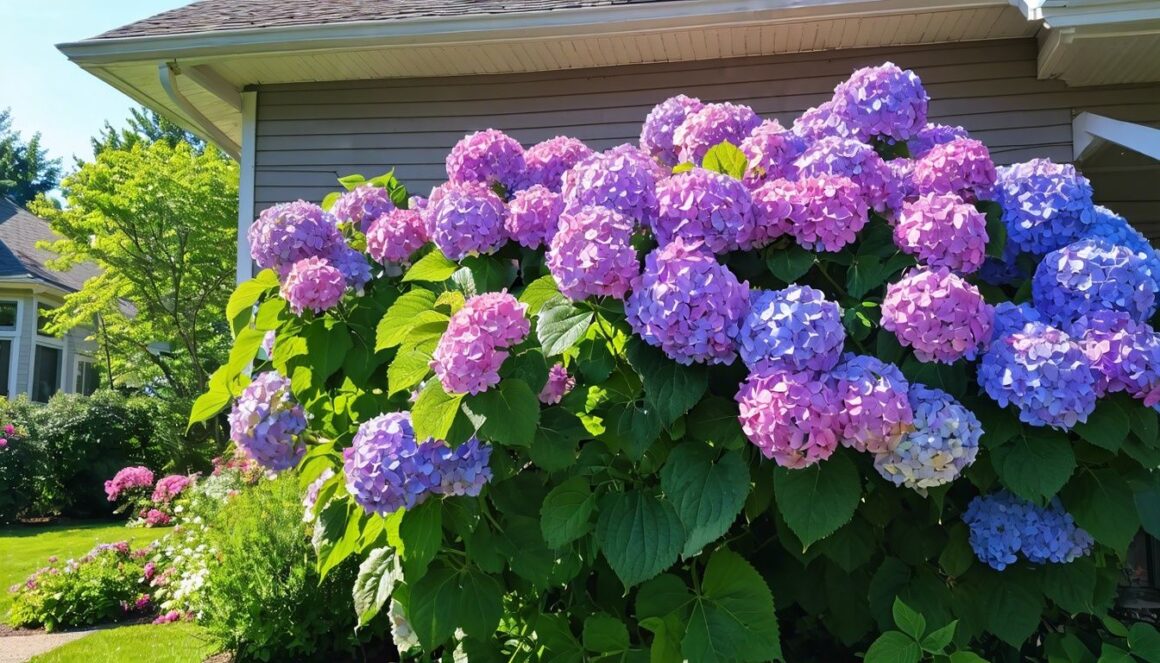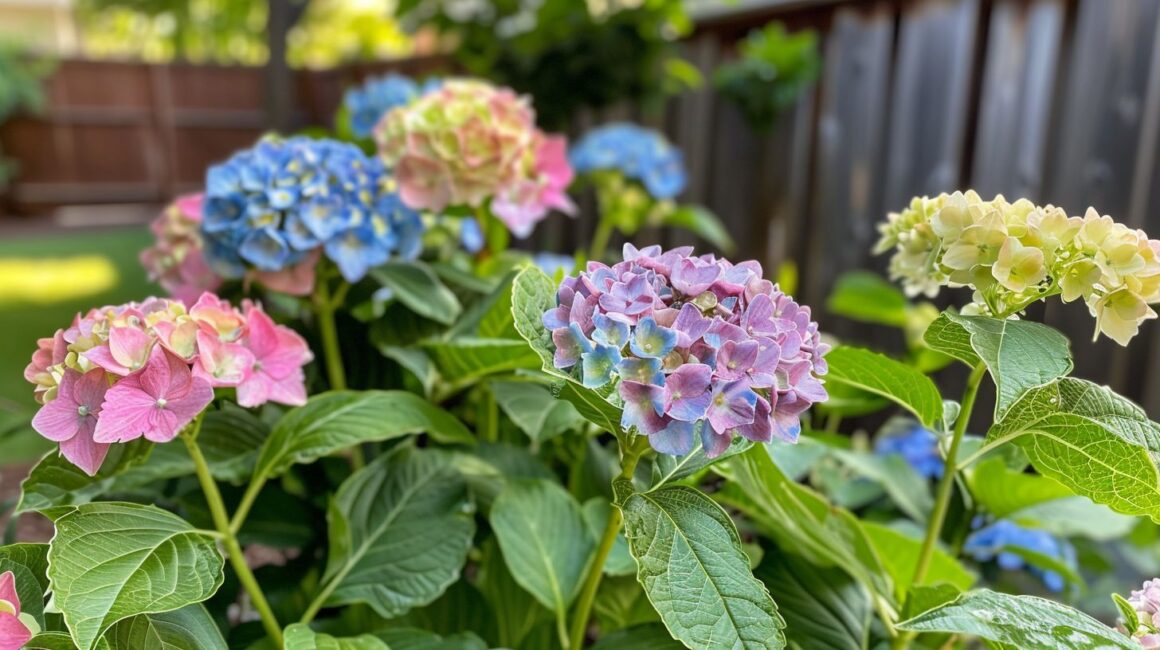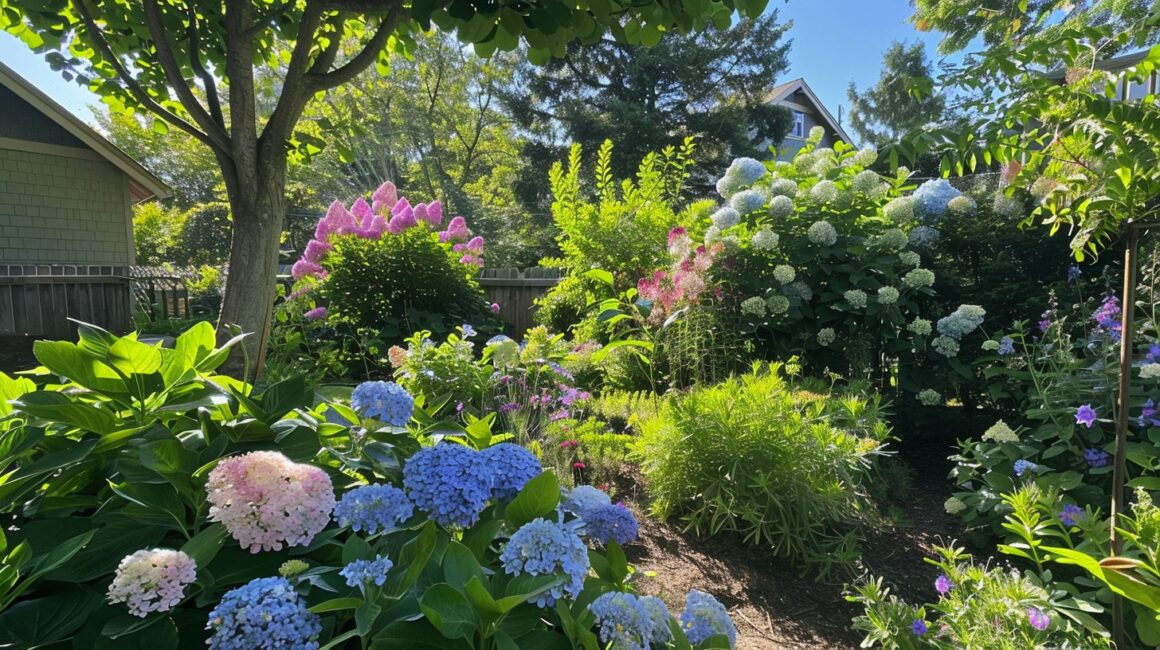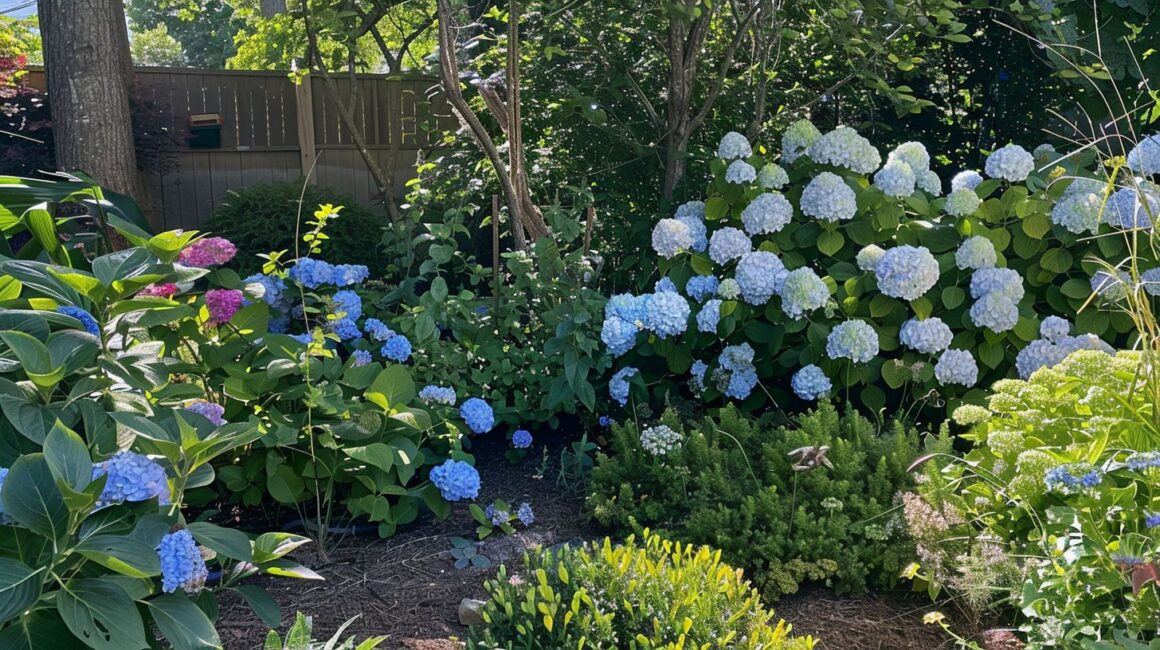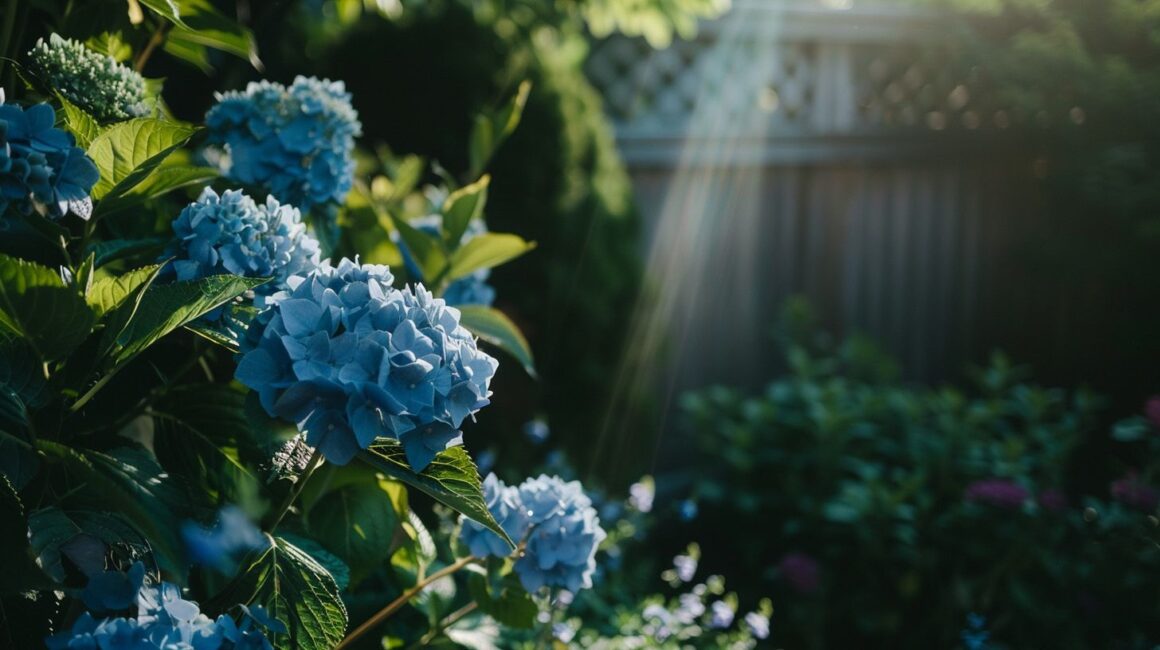You finally found the perfect hydrangea to plant, but now you need to find the perfect spot. Picking the right location is key to keeping your hydrangeas happy and blooming year after year.
Did you know the east side of your house might be the winner? Keep reading to learn about different types of hydrangeas, the best and worst places to plant them, and tips for keeping your hydrangeas thriving.
You’ll be snapping pics of those gorgeous blooms in no time.
Key Takeaways
- The east side of the house is generally the best location for planting most hydrangeas because it provides morning sun and afternoon shade.
- Different types of hydrangeas have varying sun and soil requirements, so it’s important to choose a variety that suits the specific conditions of your chosen planting location.
- Hydrangeas thrive in well-drained, acidic soil with a pH of around 6.5.
- Proper watering is crucial for hydrangeas, aiming for about an inch of water per week, especially during dry periods.
- Pruning techniques vary depending on whether the hydrangea blooms on old wood (prune after flowering) or new wood (prune in late winter or early spring).
Understanding Hydrangeas
Hydrangeas are a popular choice for gardeners due to their stunning and abundant blooms. However, they can be a bit finicky, so understanding their needs is key to success.
Different types of hydrangeas
Oakleaf hydrangeas require full sun to part shade in hardiness zones 5 through 9. Panicle hydrangeas are hardy to zone 4 and tolerate a wide range of soils. Bigleaf hydrangeas prefer partial shade.
Climbing and bigleaf hydrangeas also prefer partial shade. Smooth hydrangeas bloom on new wood. Gardeners commonly cut back smooth hydrangeas to the ground in late winter to early spring.
Panicle hydrangeas prefer full sun.
How to plant and care for hydrangeas
Hydrangeas, with their beautiful blooms, can enhance the beauty of any garden. Achieving those blooms requires proper planting and care.
- Timing is Key: Plant hydrangeas in the fall or early spring. This timing allows the root system to establish itself before the heat of summer.
- Site Selection Matters: Choose a spot with morning sun and afternoon shade. This balance helps the hydrangeas thrive.
- Soil Preparation is Crucial: Ensure the soil is well-draining yet moist. Hydrangeas don’t like “wet feet.” Amend the soil with compost to improve drainage and fertility.
- Digging the Right Hole: The planting hole should be twice as wide as the root ball and just as deep. This width encourages outward root growth.
- Planting with Care: Gently remove the hydrangea from its container and loosen any circling roots. Position the plant in the hole so the top of the root ball is level with the surrounding soil.
- Backfilling and Watering: Fill the hole with amended soil, tamping gently to eliminate air pockets. Water deeply after planting to settle the roots.
- Consistent Watering is Essential: Hydrangeas need about an inch of water per week, especially during the first couple of years. Use a soaker hose to deliver water directly to the roots, minimizing evaporation.
- Fertilizing for Optimal Growth: Fertilize based on the specific hydrangea variety. Too much fertilizer can lead to leafy growth at the expense of blooms.
- Pruning Promotes Health and Blooms: Pruning times vary by variety. Determine if your hydrangea blooms on old wood (previous year’s growth) or new wood. Prune after flowering for those blooming on old wood. For those blooming on new wood, prune in late winter or early spring.
Factors to Consider When Choosing a Location
The ideal location depends on your specific environment and the hydrangea variety. Think about your yard’s features like sunlight, shade patterns, and soil type to determine the perfect spot.
Sun requirements
Hydrangeas love sun, but how much depends on the hydrangea varieties and your zone 6 location. Some, like the ‘Endless Summer’ hydrangea, enjoy full sun, that’s 6+ hours a day. Others prefer dappled or partial shade, meaning 2-4 hours of sunlight, especially during the hot afternoon sun.
Too much sun? You’ll be stuck constantly watering your hydrangea. Too little sun, and you get leggy plants with few blooms, definitely not what you want when you plant a hydrangea! Pay attention to how much sun the spot gets throughout the day before you plant your hydrangea.
This helps you choose the right variety of hydrangea for the spot, or the right spot for your new plant.
Soil conditions
Good drainage is essential for hydrangeas. They love lots of organic material in the soil. This combination keeps the roots happy, not too wet, not too dry. Acidic soil (a pH around 6.5) is what hydrangeas crave.
Interestingly, you can actually change the color of some hydrangea flowers by adjusting the soil pH.
Species of hydrangea
Bigleaf hydrangeas love well-drained soil. They need plenty of water. Panicle hydrangeas tolerate full sun to part shade. Oakleaf hydrangeas prefer moist soils. The Light-O-Day variety, with its variegated foliage, thrives on the east side of the house.
I have a Light-O-Day hydrangea on the east side of my house. The morning sun and afternoon shade help it thrive.
what side of the house do you plant hydrangeas
Hydrangeas thrive in locations that meet their specific needs. Let’s explore the best spots around your house to plant these beauties for maximum growth and those gorgeous blooms.
East Side of the House
The east side of the house is often ideal for most hydrangeas. They receive morning sun, which they love, and afternoon shade, which protects them from harsh rays. This balance helps your hydrangeas thrive, encouraging abundant blooms and healthy growth.
But keep in mind that the Light-O-Day variety, with its variegated foliage, benefits from east-side planting to prevent leaf scorch.
South Side of the House
The south side of a house can get intense sun. This might be too much for some hydrangea types. If you want to plant there, panicle hydrangeas are a good bet, they can handle the heat with enough water.
North Side of the House
The north side of a house receives morning sunlight. The north-facing side of a home receives the least amount of sunlight. The north side is suitable for most hydrangeas.
West Side of the House
The west side is the least ideal location for your hydrangeas. The intense afternoon sun exposure can be brutal for these shrubs. If you must plant on the west side, choose panicle hydrangeas.
Consider soaker hoses or drip irrigation to help your hydrangeas thrive.
Tips for Planting Hydrangeas
Planting your hydrangea correctly is key to its success. Water well after planting, especially during dry periods.
Choosing the right spot
The perfect spot for your hydrangea? Morning sun and afternoon shade—ideal growing conditions for these beauties. They love acidic soil, so mix in some acidic fertilizer annually.
That’s the secret to beautiful hydrangeas!
Proper watering and fertilizing
Hydrangeas love water–about an inch per week, best given in the morning. Water the hydrangea plant at the base to encourage root growth and prevent diseases. Fertilize your hydrangeas annually, but the type of fertilizer depends on the hydrangea variety–oakleaf and panicle hydrangeas might need something different.
Pruning techniques
Prune hydrangeas that bloom on old wood—after they finish blooming in summer. Cut back hydrangeas that bloom on new wood in late winter or early spring.
Conclusion
Choosing the right spot for your hydrangeas is key for vibrant blooms. The east side of the house often provides the perfect balance of sun and shade. Remember to consider the specific needs of your hydrangea variety, like how much sunlight it prefers.
With proper care, including watering and pruning, your hydrangeas will thrive. Don’t be afraid to experiment – even if your space isn’t perfect, containers offer a great alternative.
Soon, you’ll be enjoying the beauty of these stunning flowers. Happy gardening!

Jonathan Fleck, a seasoned 40-year-old writer and editor, boasts an impressive 12-year career specializing in the dynamic realms of Home and Garden. As the Chief Editor of Home and Around Blog, Jonathan is at the forefront of curating content that resonates with enthusiasts and novices alike. His vast knowledge encompasses a range of topics, including houseplants, small space gardening, home DIY, small space living, and crafting.
Jonathan’s academic journey includes a graduation with a degree in the History of Art from Long Island University (LIU) in New York City, New York, United States. This educational background, coupled with his passion for creative expression, has shaped his unique approach to writing about the aesthetics and functionality of living spaces.
With a keen eye for detail and a wealth of experience, Jonathan has become a trusted voice in the Home and Garden community. His articles not only provide practical advice but also inspire readers to transform their living environments into personalized havens. Whether it’s cultivating a thriving indoor garden, optimizing small living spaces, or embarking on creative DIY projects, Jonathan Fleck’s expertise shines through, making him a respected authority in the field.

